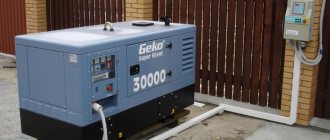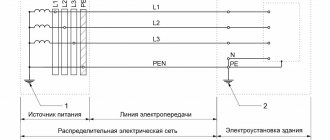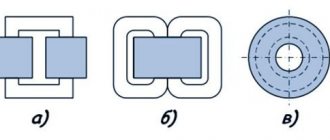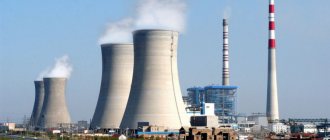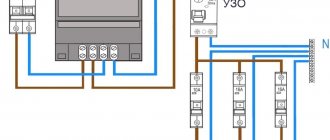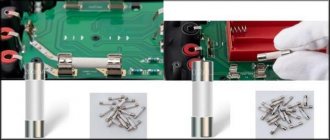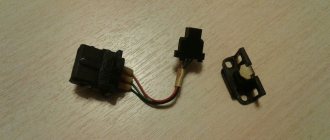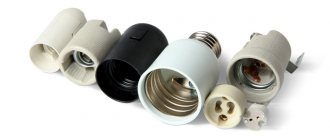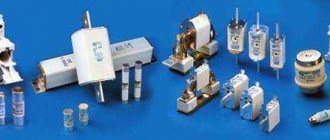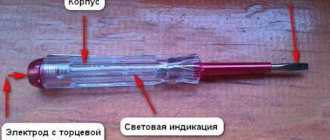What is a generator? This is an electromechanical device that converts kinetic energy into electrical alternating current. The basis of energy transformation is a rotating magnetic field. The concept of a generator includes a lot of devices of different operating principles. These are galvanic, electrostatic devices, solar panels, power plant turbines, etc. The article will focus specifically on electrical energy generators.
Electric generators
How does it work
The engine chambers contain compressed fuel that can ignite. During the combustion process, gases are formed that begin to rotate the crankshaft. Because of this, the alternator rotor begins to work. A magnetic field is generated in the stator.
Electric generator
The result of the processes described earlier is the appearance of an inductive electric current in the winding. It is available for consumption immediately at the device output by any other devices. Trips to nature, backup power supply - situations when such solutions become relevant. In this case, an electric generator is indispensable.
Operating principle of an electric generator
The operation of units that convert energy is based on Faraday's law of electromotive force (EMF). The scientist discovered a law that explained the nature of the appearance of current in a metal circuit (frame) rotating in a uniform magnetic field (the phenomenon of induction). Current also occurs when permanent magnets rotate around a metal circuit.
The simplest generator circuit is represented in the form of a rotating metal frame between two opposite-polar magnets. Slip rings are placed on the axis of the frame, which receive a charge of electric current and transmit it further along the conductors.
In reality, the stator (the stationary part of the device) consists of electromagnets, and the rotor is a group of frame conductors. The device is a reverse electric motor. The electric motor absorbs the electric current and causes the rotor to rotate. An electric generator that converts the kinematic energy of mechanical rotation into EMF is called an induction generator.
Generator types
One classification of generators is based on the source from which the energy comes. The current generated as a result of the operation of internal components is also different, which helps to distinguish other groups. Each variety has its own characteristics, positive and negative sides.
Petrol
In most cases, the power of such devices does not exceed 20 kW. The scope of use of the devices is quite wide:
- Country houses.
- Dachas.
- Power supply for hand-held power tools.
- Small machines, and so on.
Models
Lighting of local areas, retail areas, car parks - work that is not a hassle for these types of electric current generators.
Interesting! AI-92 is a brand of gasoline that serves as a standard fuel source for most models. 76 and 95 are types of fuel that are also allowed to be used, but for a short time.
Gasoline generators for alternating current are either mobile or stationary. The wheelset is equipped with units characterized by increased power. Manual start or starter is used equally, depending on the main characteristics of the model. A sound-absorbing casing is used to make the operation of the device less noisy.
Diesel
The power of devices of this class can reach 3 mW. For country houses and dachas these are good sources of constant energy. Powerful woodworking equipment is also often powered by autonomous diesel sources of alternating electric current. The same applies to machines with other purposes. Diesel generators are sometimes used to provide electricity to entire villages.
Internal organization
The installations in this case also differ in stationary or mobile design. A distinctive feature is noisy operation. Therefore, in some cases it is impossible to do without special casings that absorb sounds from electric generators .
Diesel generators differ from their gasoline counterparts in their reduced fuel consumption. And the raw materials themselves are cheaper. Expensive models support additional functions:
- Control of the energy generation process.
- Automatic activation in case of emergency situations.
Gas
When choosing, the main thing is to decide in what mode the equipment will operate on an ongoing basis. Here experts give several recommendations:
- When organizing a complete autonomous power supply to your home, it is recommended to give preference to models with liquid-cooled internal combustion engines, designed for uninterrupted operation.
- Backup models are relevant if the power is often turned off on the site. Usually they cannot work longer than 10-20 hours. After this, a break is required, and routine maintenance cannot be avoided.
You may be interested in Features of alternating voltage electric current
Launch
The devices can operate on liquefied or natural gas. The latter option is more suitable for devices configured for basic energy saving. Reserve options are best used in conjunction with liquefied gas cylinders. Models are now being produced that support both types of fuel at once.
Some allow operation with gasoline. Therefore, there is no need to worry that the owners will be left without electricity.
Bottom line
As a result, let’s work with StabExpert.ru to list the most important points when choosing a generating station:
- If you need a generator for your home that will replace the main electrical network, then a gas generator is cheaper and quieter. If you need a constant power source, and a powerful one at that, then diesel has no alternative.
- For gasified areas, you can purchase a combined device, but only a certified service should connect them.
- Inverter generators are better in terms of the current received, more economical, but more expensive.
- A welding station is usually cheaper than purchasing a separate generator and welding machine, and not all generators are capable of powering them.
- It is more convenient to start with a button (key), but for this a battery is installed, this increases the cost and complicates the design. There are autostart systems, they are purchased separately and are not suitable for all devices (read the description of specific models).
- The hour meter is a plus.
Add a link to this page on the social network (buttons below), it will be useful to you. Good luck with your choice!
Generator classification
There are several signs on the basis of which an electric generator can be classified as one of the varieties:
- Scope of application.
- Operating modes.
- Phasing.
- Autonomy.
Operation
For each of the characteristics, you need to study the model in advance, then the choice will be easier to make.
Autonomy
Complete independence from centralized energy sources is one of the main advantages that modern generators have. Depending on this indicator, models are divided into mobile or stationary.
Stationary
We are talking about generating stations, the basis of which are diesel engines. Suitable for supplying electrical energy to consumers remote from other similar facilities. They provide power supply in those areas where even the slightest interruption of production processes will lead to serious negative consequences.
Mobile
Most often, these units are the most compact. Allows movement in the installation space. Mobile stations have a fairly wide range of applications:
- Electric welding.
- Local lighting.
- Supply of current to household electrical appliances, and so on.
Maintenance and repair
An internal combustion engine is installed inside the equipment, which can run on diesel fuel or gasoline. The units differ from each other in size. One person is enough to move only the smallest devices. But there are mobile options, which are installed on car trailers.
Phasing
The units are divided into three- and single-phase depending on the internal structure of the devices.
Single-phase
They are distinguished by their ability to produce single-phase current. Powering household appliances is the main purpose of the devices. Typically, devices are produced as mobile ones to make them easier to handle. Private households are objects within which single-phase units can be found most often. For example, to meet various needs at the household level.
Three-phase
Powering power electrical equipment is the main function. Sometimes such energy is divided into several phases. For powering electrical wiring, this is a very convenient solution that allows you to split the line into several parts.
Interesting! The main thing is that the power consumption of all lines remains approximately the same. The generator quickly fails if there is a serious difference between the values.
Operating modes
Primary and backup are the two main types of operating modes according to this classification.
Basic
Such devices are designed to work on an ongoing basis. The group of industrial installations consists of powerful electric generators equipped with diesel engines. Relevant for facilities that require constant electrical energy.
Reserve
From the name it is easy to understand that such electric generators are used only in some, exceptional cases. For example, if the centralized power supply is turned off for some time. Such devices can turn on if a relay that responds to a decrease in voltage is activated. Continuous operation is only permissible for several hours.
Scope of application
Generators are produced with two main areas in mind: domestic conditions or industrial facilities.
At home
The choice of household generators on the modern market will please any consumer, regardless of scale and requirements. Typically, single-phase installations are chosen that are capable of establishing an uninterrupted supply of electric current in emergency situations. Powering remote electrical equipment is another area of application. The quality of current becomes a particularly important indicator when it comes to household electrical appliances that use a digital element base. In this case, the energy should have the following parameters: 220 V, 1 A, 50 GHz.
You may be interested in: Features of current resonance
In the country
When performing electric welding work, installations with increased power are used. The advantage is that a serious current is generated to form an electromechanical arc.
Note! If the instructions do not immediately describe the use for electric welding, then you should abandon such an idea. Otherwise, generators quickly deteriorate.
Industrial facilities
More often we are talking about independent powerful stationary installations. They are relevant for industrial enterprises and entire residential areas, hospitals, public institutions with high traffic. Then such mechanical devices are relevant.
Malfunctions of autogenerators and ways to eliminate them
When operating generators, mechanical and electrical faults may occur. Often, one failure that is not corrected in time becomes the cause of others.
Signs of generator damage:
- flashing or constant operation of the charging lamp when the engine is running;
- insufficient charging or overcharging of the battery;
- dim light of external light alarm;
- lamp pulsations;
- a significant increase in the brightness of the lamps with increasing speed;
- extraneous sounds, the source of which is the generator or drive.
Mechanical breakdowns
Common mechanical faults:
- the appearance of cracks on the drive pulley;
- drive belt break;
- wear of the armature bearings, which leads to jamming of the generator.
Cracks and chips on the pulley are detected during a visual inspection of the unit. The sharp edges begin to destroy the drive belt, which can come off the pulley along the damaged edges. A broken or burst pulley must be replaced with a new one; repair of the unit is impossible. The new pulley must have the same geometric parameters as the worn one.
Damaged armature bearings begin to emit a characteristic whistle during operation. You should not delay repairs, since the operating mode of the generator is disrupted due to a change in the gap between the armature and the stator. As a result, the armature may jam, which will lead to belt breakage and damage to the brushes and windings.
Electrical breakdowns
Failures of the electrical part of generators:
- abrasion of current collecting brushes;
- wiping the commutator part of the generator rotor;
- failure of the voltage regulator;
- interturn short circuits of the stator winding;
- burnout of the rectifier diode bridge;
- destruction of connecting wiring;
- burning or oxidation of wiring connections.
To check the functionality of the generator, use a multimeter or voltmeter designed to measure a direct voltage of 0-20 V. Before starting measurements, it is recommended to warm up the unit by letting it run for 10-15 minutes with the engine idling and the consumer running (for example, low beam headlights). Measuring the voltage between the positive terminal of the generator and the vehicle ground should show a value in the range of 13.5-14.5 V. More accurate information is available in the repair and maintenance instructions for the car. If the voltage deviates from the standard, the relay regulator must be replaced.
Checking the voltage at the battery terminals allows you to detect damage to the connecting wiring. For a full measurement, it is necessary to increase the engine speed to high and connect powerful energy consumers (for example, high beam headlights, heated windows and seats). In this case, the voltage should be close to the value on the relay regulator. Otherwise, it is necessary to check the wires and connection points.
The serviceability of the diode bridge is checked by installing a multimeter on the positive terminal of the generator and ground in AC measurement mode. The voltage value should be within 0.5 V. A higher voltage is a sign of a faulty diode bridge.
The process of replacing the generator on a Ford Focus 2 is shown in a video provided by the ABC Ford channel.
Measuring breakdowns of the generator windings is carried out with the battery disconnected and the wiring disconnected from the positive terminal of the device. The tester, switched to ammeter mode, is connected between the terminal and the wiring. A value of up to 0.5 mA is considered acceptable. With increased current, breakdown of parts of the diode bridge or windings is possible.
To check the field windings, it is necessary to remove the generator from the car. Work is being carried out with a remote voltage regulator and brush assembly. Before starting the test, the slip rings are cleaned of dirt. Testing is performed with a multimeter set to ohmmeter mode. The connection is made to slip rings. The normal resistance value is in the range of 5-10 ohms. To measure the breakdown to ground, an ohmmeter is attached to the rings and body. In good condition, the resistance value will be infinite; with other values, there is a breakdown.
It is strictly forbidden to check the operation of generators using the short circuit method. Such actions lead to failure of not only the unit, but also the electronic components. It is recommended to carry out diagnostics of the device on stands available in specialized centers. Doing it yourself can result in costly repairs.
Quality of operation: what factors does it depend on?
There are some important parameters, without calculating which it is impossible to make the right choice.
- Power.
To do this, you need to calculate in advance how much power all devices installed at home consume. The load from the main consumers can be active and reactive. The main thing is to take into account some margin and apply the appropriate coefficients.
What is inside?
1-1.3 - in this range is the active load factor for household electrical appliances. 3 - the same parameter, but for devices operating with reactive load.
Important! It is necessary to add all types of load to each other in order to understand which unit is required in a particular case. 15% is set aside as a reserve from above. After all, over time, the number of electrical appliances sometimes increases. When starting up, some devices consume much more energy than indicated in the accompanying documentation.
- The type of load the generator operates with.
There are networks with voltages of 220 and 380 V. Many people think that the latter option is universal, which is why it should be preferred in most cases. But it is still better to opt for a single-phase network if there are no plans to connect devices with the appropriate characteristics.
Otherwise, when installing electrical wiring, problems arise that cannot be immediately foreseen.
- Types of fuel used to generate current.
The reliability of most modern installations remains almost the same. The only significant difference is in the cost of devices and energy sources for them.
Power
Another selection criterion is power. It is clear that the total power of electrical appliances connected to the generator should not exceed the power that it can produce. It’s better if the load of all consumers is 20 percent less than the limit value for the generator (StabExpert.ru). This is exactly how this parameter should be calculated, but that’s not all.
The electrical power of an alternating current network can be understood as its total (S), active (P), or reactive (Q) value. Each of the listed types of power has its own unit of measurement:
- Total power is measured in volt-amperes (V•A);
- active component - in watts (W);
- reactive component – in vars (volt-ampere reactive, V•Ar).
Active power is consumed by heating elements and incandescent lamps. Electric motors and starting devices for some types of lighting lamps, along with active power, also consume a reactive component.
In order to correctly calculate the power of consumers, it is necessary to correctly take it into account in comparable units. The nameplates of electrical appliances often contain the value of active power in W, kW. On devices that consume more than just an asset, the total power can be indicated in VA, kV•A. To correctly add loads, the active component should be separated from the total power. This is done according to the formula:
P = S•cosɸ,
where cosɸ
- the so-called power factor. Its value is also often indicated on electrical equipment labels. If such information is not available, the average value cosɸ = 0.85 can be taken for calculations.
Having calculated the total value of the active power of all intended consumers, you need to add about 20% of the reserve to it (i.e., multiply the resulting amount by 1.2). The resulting value will determine the minimum active power of the selected generator.
Unit selection
When purchasing a generator, it is recommended to immediately decide for what purpose the installation is needed. If this is a backup power source, a minimum set of devices must be taken into account. To organize a completely autonomous system, you need to count all the devices and add at least 20% to them.
Work in winter
When choosing between gasoline and diesel units, the buyer must answer several questions:
- Number of phases.
- A type of engine starting for a particular situation.
- Acceptable noise level.
- Required power indicator.
- Expenses for purchasing the unit.
- Which manufacturer did you decide to trust? This is also important for non-electrical installations.
Kinds
Today, manufacturers produce several types of synchronous generators. Among the existing classifications, several deserve special attention. First of all, it is worth considering the division of units according to their structural design. There are two types of generators.
Brushless. The design of the electric generator involves the use of stator windings. They are placed so that the cores of the elements coincide with the direction of either the magnetic poles or the cores that are provided on the coil. The maximum number of magnet teeth should not exceed 6 pieces.
The following classification involves dividing mobile stations into separate types.
Hydrogenerators. A distinctive feature of the device is a rotor with pronounced poles. Such units are used to produce electricity where there is no need to ensure a large number of device revolutions.
There are several common models of such devices.
Stepper. They are used to ensure the operability of drives installed in mechanisms that have a start-stop operating cycle.
Gearless. Mainly used in autonomous systems.
The first are devices in which the poles are clearly visible. They are characterized by a low rotor speed. The second category has a cylindrical rotor in its design, which has no protruding poles.
Which companies to trust?
Not only well-known companies, but also those that have appeared quite recently are engaged in the production of electric generators. It’s easy to get confused in the available assortment without some preparation.
Stationary installation
The following several names are well known to the domestic buyer:
- "Boar". It is in greatest demand among Russian companies engaged in this area. Power ranges from 2 to 230 kW. The generators are suitable for both domestic and industrial use. WAY - models suitable for use at home.
- SDMO. Another manufacturer whose models are found in large quantities. Units in this case also have motors operating on 1 or 3 phases. Power and external design are the main differences between different models. The noise-absorbing housing is perfect for those who use household types of generators. Air cooling, power up to 10 kVA - characteristics of a separate class of devices. They are often equipped with additional outputs for AC or DC current. An electric starter complements the stationary varieties of models. They are installed on a frame or inside containers with sound insulation function.
- Geko. Manufacturer with a wide range of products for any conditions. He creates not only household models, but also options with a narrower specialization. A single- or three-phase motor is installed inside the models, depending on what goals the consumer is pursuing. Starting is manual or it is replaced by an electric starter. Some models have noise-absorbing covers. The built-in automatic start panel is also a good addition to standard power plants.
You might be interested in what is resistivity
Diesel power plants
More economical than gasoline engines, with the same power values, they weigh more and are noisier in operation. Due to these differences, the scope of application of diesel electric units is somewhat different than that of gasoline units.
Fig. 3. A fairly popular 3 kW compact diesel generator with a Subaru engine is Energo ED 3.0/230-S.
Power plants with a diesel engine are mostly represented by stationary models, which serve as sources of constant or backup power supply. Mobile units are produced in a very small power range. In the mobile version, diesel units are mounted on the frame of a car trailer. The power of diesel plants varies from several kilowatts to several thousand kilowatts.
Fig. 4. Installation at 1 MW, from one of the leaders in the production of powerful models FG WILSON P1250P3.
Features of diesel engines include an increased degree of compression of the fuel mixture, which makes it difficult for the crankshaft to rotate during startup. For this reason, only the lowest power units (4 - 4.5 kW) are equipped with manual start devices. The most typical start for a diesel engine is the starter start.
In this case, in addition to the starter, the unit must be equipped with a starter battery. StabExpert.ru reminds that even units with manual start must have a battery for pre-heating the glow plugs.
In addition to starting from the starter, there are autostart systems, read about them below.
In addition, the diesel engine power system is quite sensitive to the quality of the fuel, which requires a more careful approach when refueling it.
About welding generators
Users often ask whether welding equipment can be connected to generators. Manufacturers say that this is possible, but only for welding inverters. The main thing is to operate the equipment without overloading. This directly affects the service life.
Connection
For cooking, it is recommended to use an electrode no larger than 2 mm. It is not advisable to choose a larger diameter; this will negatively affect welding.
Ensuring security requirements
Generators are usually installed outside closed areas. The main thing is that they are located where complete protection from precipitation and other environmental influences is guaranteed. The toxicity of exhaust products is the main reason why generators are prohibited from operating in enclosed spaces.
Note! A solid, stationary horizontal surface without elevations is the optimal support for installation. During installation, you must ensure that there is a free space of at least 1 square meter. This distance should remain on each side of the generator. This is necessary to organize free air circulation and eliminate heat transfer from the generator to surrounding objects.
There should be no foreign objects on the side of the outlet. They can damage the structure or become a source of additional danger to it. The ventilation openings should also be free of any contamination.
Children and other unauthorized persons must not have access to the generator. The same applies to other people who are not familiar with the principle of safe operation.
Self-repair of generators is prohibited; for this you need to invite specialists.
Finding sources of flame or smoldering combustion near the unit is unacceptable. Otherwise, it will not be possible to convert energy safely.
Compact devices
Additional information about connection and operation
It is also better to entrust the installation to specialists so that the device can continue to operate without interruptions. In this case, he will not become a source of danger to others. Connecting the device involves connecting its electrical wiring to a centralized network. Therefore, additional safety regulations must be observed.
Here are the main recommendations:
- When the installation work is completed, the unit is prepared for operation.
- To do this, check the oil level in the crankcase.
- This procedure is carried out while the unit is on a flat horizontal surface.
- As it is consumed, it is refueled.
- If the unit is indoors, be sure to ventilate it during maintenance.
- The gas station does not allow smoking or the use of open flames.
- Gasoline is poured as carefully as possible, avoiding leaks.
One of the options
When the preparatory work is completed, the engine is started. This is achieved by a manual or electric starter, depending on the model.
Alternating current generators on the modern market are presented in a large number of models. Everyone makes the final choice depending on their needs and purposes of use. Various power systems and power range are determined by the object within which the installation is installed. Sometimes the availability of specific types of fuel in a particular region is assessed. It is recommended to choose models that require the least maintenance costs.
Application area
Synchronous generators are devices designed to produce alternating current. You can find such devices at various stations:
- atomic;
- thermal;
- hydroelectric power plants.
The units are also actively used in transport systems. They are used in various cars and ship systems. A synchronous generator is capable of operating both in autonomous mode, separately from the electrical network, and simultaneously with it. In this case, it is possible to connect several units at once.
The advantage of stations generating alternating current is the ability to provide a dedicated space with electricity. Convenient if the object is located far from the central network. Therefore, the units are in demand among owners of farms in settlements remote from the city.
